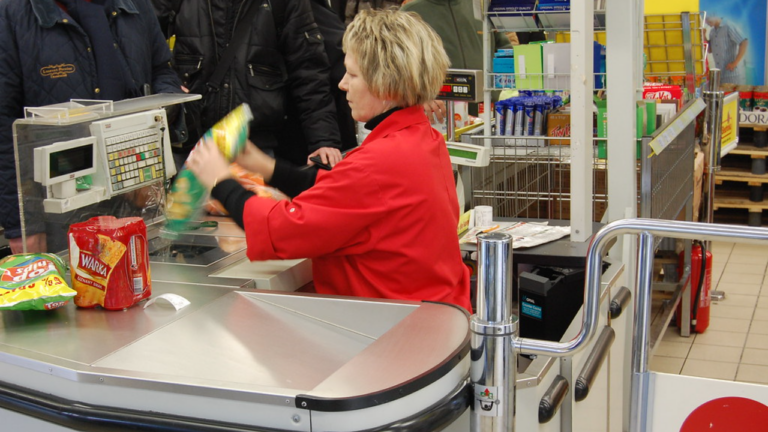How to Monitor My Cashier

While it’s great to put your employees in charge of important tasks like taking payments and closing the register, it’s also wise to have safeguards in place to ensure your revenue is protected and your peace of mind is preserved.
You can protect your revenue and keep tabs on the payment by monitoring your cashier using employee monitoring software. Monitoring your cashier ensures fraud prevention and it also provides details about your total earnings and spending.
Read below to learn more about the processes of monitoring your cashier.
Why Should I Monitor My Cashier
Your cashier is the person handling your business’s transactions. That alone makes it crucial to monitor him. However, there are other reasons to monitor cashiers as well.
Prevention of Employee Fraud
Employee fraud can impact your business transactions. A few examples of employee fraud activities include swiping money from the register during the end-of-day closing process or neglecting to report a transaction when given cash.
There are a lot of ways this may happen, and one of them is by taking cash.
Taking credit cards opens the door for dishonest employees to use their own or friends’ cards to conduct fraudulent refunds.
Oversee Fraud Prevention
Cashiers have a responsibility to safeguard customers’ financial information when they process credit card purchases.
You can save money, decrease the likelihood of downgrades, and protect yourself from fraud by implementing security best practices and monitoring your cashiers’ compliance.
For example, with the appropriate technologies, you can monitor whether an employee exercised all necessary measures on a keyed-in transaction for an over-the-phone purchase or a new customer.
Investigating the transaction logs can help you hold employees accountable and rectify negligent behavior in the event of a chargeback.
Evaluate the Team's Progress

On a lighter note, tracking your cash register activity helps you to view performance across the entire team.
You can use this information to base your promotions and incentive decisions on who is the most productive or has the highest sales volume.
How to Monitor My Cashier
Installing employee tracking software allows you to keep tabs on your cashier.
Employee monitoring software provides companies with accurate insights into how employees use their time, such as what applications they use and how much time they devote to work-related tasks and initiatives.
Employee monitoring software keeps tabs on what workers do while on the clock, including what websites they visit, messages they send, applications they use, and files they view.
Monitoring employees serves a dual purpose: first, it prevents violations of business regulations and rules; second, it ensures that employees are productive and accountable.
Features of Employee Monitoring Software
Employee monitoring software allows you to keep tabs on what your workers are up to when they’re using their devices. Some examples of this kind of tracking include keeping tabs on the websites visited and the amount of time spent using particular applications.
Email and Message Monitoring
Many employee monitoring software enables employers to keep track of their employees’ email and message activity. This helps in monitoring communications pertaining to work and guarantees adherence to business regulations.
Remote Access and Control
Employee monitoring software allows companies to remotely access their employees’ devices and intervene as needed. You can use this function to fix technical problems or find and fix security flaws.
Time Tracking
Employee monitoring software will monitor employees’ work hours, helping to estimate their working and break hours.
Choosing the Right Monitoring Software
Ethical and Legal Issues
Before choosing a monitoring tool, it is important to become familiar with the ethical and legal variables that are applicable in your jurisdiction.
Understand the privacy rules and regulations that apply to employee monitoring. Make sure the tool you select adheres to these standards and protects the privacy of your employees.
Available Tools
Conduct in-depth research to investigate the various employee monitoring technologies that are currently available on the market.
Be on the lookout for trustworthy service providers who have a history of satisfied customers and high ratings. Think about how well it works with your current setup, how easy it is to use, and what features it offers.
Features and Personalization
Evaluate the features provided by each tool and decide which ones are most applicable to your monitoring needs.
Website blocking, keystroke logging, snapshot capturing, application monitoring, reporting, and analytics are some of the things you should look for. You should also determine if the tool can be adjusted to fit the specific requirements of your company.
Efficiency and User-Friendliness
The monitoring software’s effective implementation and usage rely heavily on a user-friendly interface. Review the tool’s dashboard and interface to make sure it’s simple and straightforward. Take into account the time it will take for administrators and staff to become familiar with the program.
Privacy and Data Security Protocols
Employee monitoring features sensitive data, which would thus require a focus on the tool’s security and privacy safeguards. Look into options that provide encrypted data storage, restricted access, and data anonymization.
Trials and DemosMake use of demos and trial periods before you decide on any program. This gives you the opportunity to evaluate the software’s functioning, user-friendliness, and compatibility with the requirements of your organization.
Reviews
Make sure you research and take into account reviews written by companies who have used the software before. You can also learn about the software provider’s past customers’ experiences by requesting recommendations.
Support and Training
Review the software vendor’s support and training services to make sure they meet your needs. A strong support system and training materials are important for successful implementation.
Budget
Although initial cost is an important consideration, it is equally important to take into account the benefits that the program will yield in the long run.
A higher investment upfront can be worth it if the program makes a big difference in your company’s output.
Conclusion
If you are not monitoring your cashier’s activity, you should start doing so. This could prevent chargebacks, employee fraud, and consumer fraud. Implement appropriate tracking of your cashier’s activities to become less hands-on while getting better oversight.